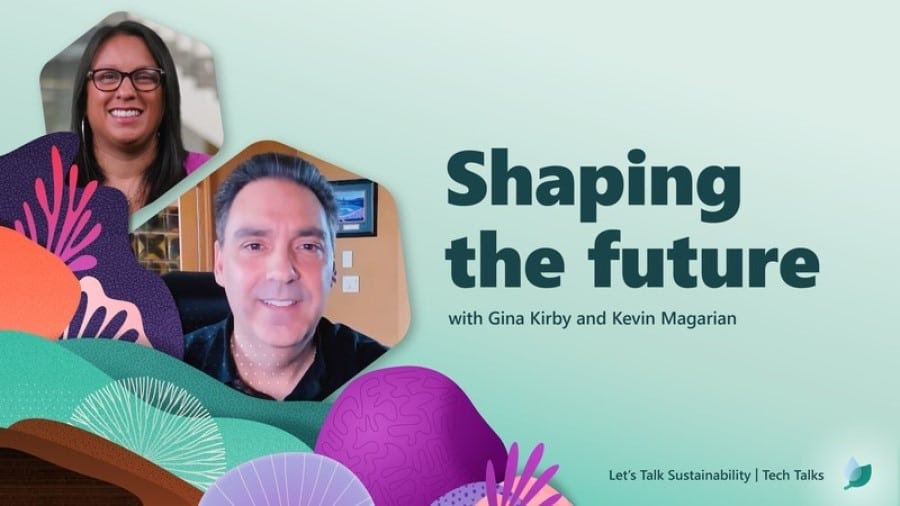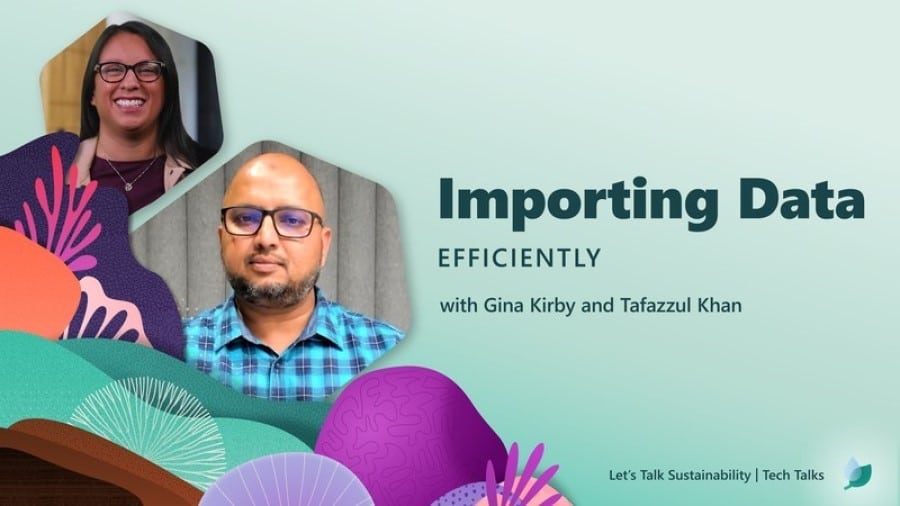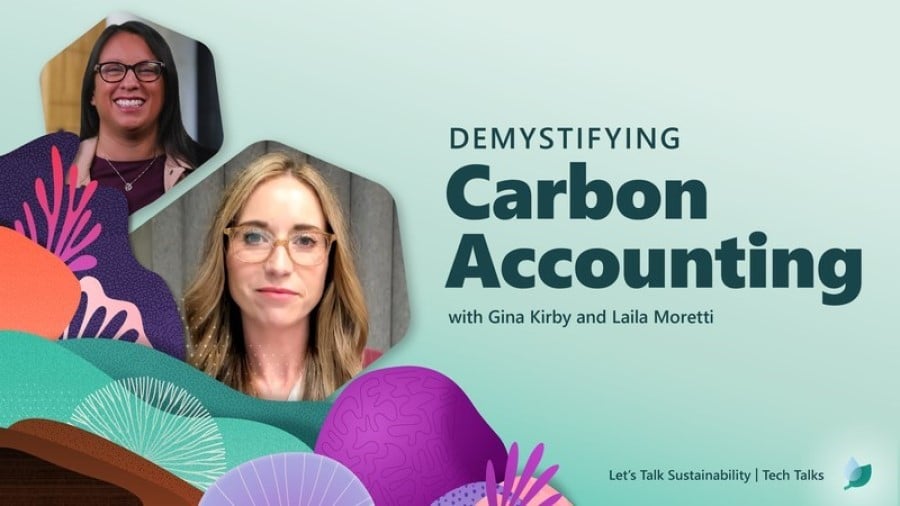Notizie per Categorie
Articoli Recenti
- Explore practical best practices to secure your data with Microsoft Purview 25 Aprile 2025
- New whitepaper outlines the taxonomy of failure modes in AI agents 24 Aprile 2025
- Understanding the threat landscape for Kubernetes and containerized assets 23 Aprile 2025
- [Launched] Generally Available: Instance Mix for Virtual Machine Scale Sets 22 Aprile 2025
- Microsoft’s AI vision shines at MWC 2025 in Barcelona 22 Aprile 2025
- [Launched] Generally Available: Announcing the Next generation Azure Data Box Devices 22 Aprile 2025
- [Launched] Generally Available: Cross-Region Data Transfer Capability in Azure Data Box Devices 21 Aprile 2025
- [Launched] Generally Available: Azure Ultra Disk Storage is now available in Spain Central 21 Aprile 2025
- [Launched] Generally Available: Azure Firewall resource specific log tables get Azure Monitor Basic plan support 21 Aprile 2025
- Hannover Messe 2025: Microsoft puts industrial AI to work 21 Aprile 2025
Moving ahead with powerful waste data features—and new Tech Talks
With the critical need to achieve global net-zero emissions and address growing reporting requirements, companies are focusing a great deal on reducing carbon emissions. But they’re also increasing efforts around water, waste, and other areas of environmental, social, and governance (ESG) performance.
In this blog, learn about this month’s preview updates to Microsoft Cloud for Sustainability, enabling more powerful waste data management. And discover Tech Talks, a new discussion series aimed at helping organizations implement and drive value from Microsoft Cloud for Sustainability faster.

Track your organization’s waste data management efficiency (preview)
The new waste capabilities in Microsoft Sustainability Manager enable you to easily meet waste disclosure requirements and understand your waste management efficiency at an organization or facility level based on standard metrics. Track your waste intensity, recovery rate, and diversion rate KPIs in waste-related reports.

Support circularity with updates to the waste data model (preview)
The Microsoft Cloud for Sustainability waste data model enables organizations to unify, standardize, and prepare waste sustainability data to make progress toward net-zero waste sustainability goals. Using waste data model entities, which enable storing waste quantity and quality characteristics and sustainability reference data, you can more efficiently report waste sustainability disclosures in compliance with various regulatory standards. And you can streamline your reporting process, ensure accurate waste metrics, and demonstrate your commitment to sustainable practices.
With our latest updates to the waste data model, you can track circular economy (or circularity) metrics, such as those included in GRI-301 and CSRD ESRS E5, which are based on material inflow and outflow related to goods production. Record and report metadata and activity data around the use of non-virgin (reused or recycled) and renewable raw materials, including parts, to manufacture finished products and the degree of circularity of the finished products, including packaging material.
The data model includes entities that help record production and circularity-related metadata that’s required to calculate the weights of renewable, reused, and recycled raw materials in finished products.
Tech Talks: Get more out of Microsoft sustainability technology, faster
There’s a ton to learn about sustainability innovation to invest efficiently and drive value faster. For organizations that want to speed up their learning about Microsoft sustainability technologies, we recommend our new Tech Talk series on Microsoft Learn.
These expert-driven, actionable discussions introduce you to the people behind the technologies. Get rich perspectives on high-level concepts as well as deeper product information, live demos, and recommended actions. We base Tech Talks on real customer questions so you can accelerate your breakthroughs while we keep refining the technologies.
Here’s a snapshot of our first three episodes, hosted by Gina Kirby, a Global Black Belt with the Microsoft Cloud for Sustainability team who works directly with customers. Have a watch.
Shaping the future with scorecards and goals

Gina often hears the question: “What’s the purpose of a scorecard?” In simple terms, a scorecard in Microsoft Sustainability Manager is a container for related goals. It can be used to track goals associated with a single category, like reducing Scope 1 emissions, or more broadly to track sustainability targets for a set period, such as the current reporting period or a future timeframe. Whatever your targeted outcomes, goals in Microsoft Sustainability Manager are invaluable for helping to define, track, and make decisions around them.
In this Tech Talk, Principal Program Manager Kevin Magarian shows you how to create a sustainability scorecard (spoiler: it’s super simple) and goals. Explore the different values assigned to goals and the best ways to track and monitor the status of these goals. Leave the session ready to tackle your organizational sustainability targets for success.
Get answers to questions like:
- What’s the purpose of a scorecard?
- How do I establish and track against a baseline?
- How can I automatically track progress?
Importing data efficiently, every time

When it comes to sustainability technology, data represents the beating heart of progress—and efficient data importing is key. After all, how can we improve our ESG practices if we don’t keenly understand where we stand? To get to this understanding, and moreover to act on it, first we must effectively harness data that’s scattered and diverse.
In this session hear from Tafazzul Khan, a Principal Program Manager for Microsoft Cloud for Sustainability, about the importance of data in the sustainability journey. See how Microsoft Sustainability Manager helps you optimize management of carbon, water, and waste data while standardizing processes and flexibility for data ingestion and management. Grasp the need for consistency and scalability in managing your data. Gain from relevant product demos. And learn about partner solutions available to help you expedite progress.
Bust these misconceptions about data ingestion:
- Myth #1: Data ingestion is complicated.
- Myth #2: Data perfection is required before you start.
- Myth #3: Importing data is a one-time process.
- Myth #4: Importing data is a one-size-fits-all process.
Demystifying carbon accounting toward global net-zero

Whether you’re familiar with carbon accounting or new to it, this session with Laila Moretti, a Senior Program Manager with Microsoft Cloud for Sustainability, provides perspective on the process of quantifying greenhouse gases produced directly or indirectly by an organization that’s so important for our collective progress to net-zero. Learn about the benefits—from identifying baselines to finding opportunities for improvement, making faster and better decisions, and achieving transparency for consumers and shareholders.
You’ll also get an overview of carbon accounting within Microsoft Sustainability Manager, including loading reference data, ingesting activity data, running calculations, and reviewing emissions data. Watch a detailed demo of setting up an emissions calculation and leave with recommendations for finetuning your own calculations.
Stay tuned for upcoming sessions on Microsoft Sustainability Manager and beyond
We’re cranking out more Tech Talks to answer your pressing questions, starting with three episodes about Microsoft Sustainability Manager, coming soon.
In Introducing Microsoft Sustainability Manager, Principal Group Program Manager for Microsoft Sustainability Robin Smith demonstrates the product’s scope of capabilities, its strengths and usefulness for your organization, and how it works in a customer scenario.
Getting to Value Quickly with Alejandro Gutierrez, Sustainability Principal Program Manager, covers the implementation journey—from installing and setting up Microsoft Sustainability Manager to using built-in learning features, demo data, and the Microsoft Cloud Solution Center.
Introducing Microsoft Sustainability Manager Water Data Capabilities features Sourav Chakraborty, Principal PM Manager. Get information to onboard a facility or site to track and report water quantity data, collect water quantity data, set water sustainability goals, report sustainable water use for ESG disclosures, and more.
Check Microsoft Learning for these and other sessions, covering a broad range of sustainability topics. Not yet using Microsoft Sustainability Manager? Try it free and learn more.
Accelerate your sustainability progress with additional resources
Expand your all-up sustainability knowledge. The sustainability journey is rife with learning opportunities. Whatever your area of interest or knowledge gap, find information to address it on the Microsoft Sustainability Learning Center.
Get news and updates. We’re constantly innovating to support our customers’ tracking and reporting of ESG progress. Sign up to receive email updates.
Explore partner sustainability solutions for your industry. Find experts and solutions that can help you address your unique ESG data management needs, on Microsoft AppSource.
The post Moving ahead with powerful waste data features—and new Tech Talks appeared first on Microsoft Industry Blogs.
Source: Microsoft Industry Blog
